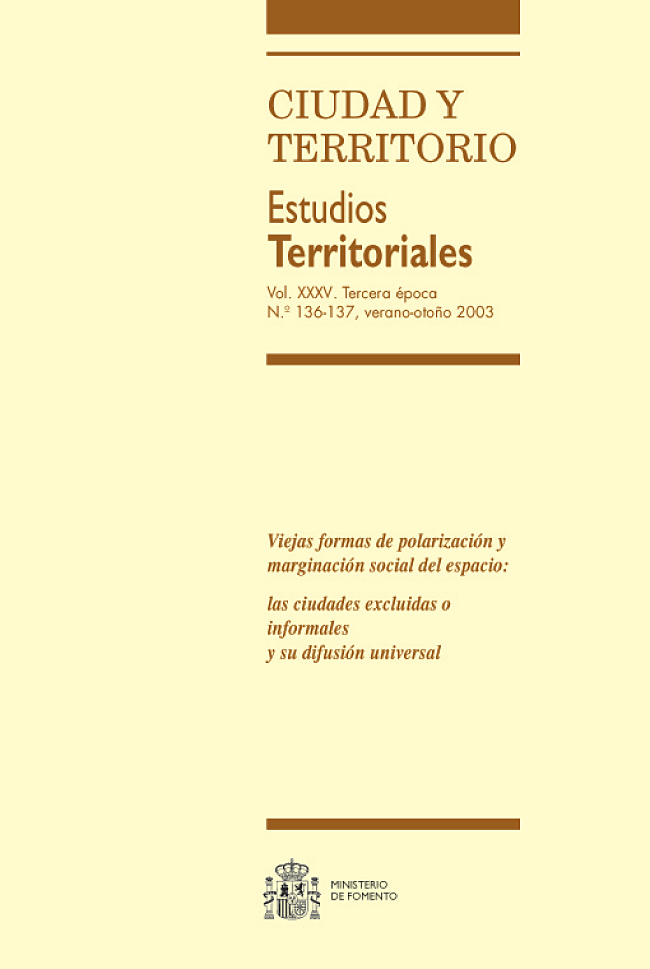Territories at War:The Townships of Buenos Aires
Keywords:
Villa miseria, ciudad marginada, vivienda marginal, historia urbana, Buenos Aires (Argentina)Abstract
The paper sets out to explain the ways and means open to the Poor when it comes to setting up
house in the Buenos Aires Metropolitan Area —AMBA— , special attention being here given to the suburban
townships of the capital as these represent in themselves many of the ups and downs of the nation’s recent
history with its succeeding civil and military regimes, its multiplicity of economic crises and its present day
all time employment and poverty low for the nation as a whole but the AMBA in particular where 37% of
the overall population lives. The township is seen to embody all the conflicts to be borne, clientelism, cooptation,
real estate hikes, internal segregation. In the same wise, their history reflects a population change
from the pre-70s productive working population with its union card carrying majority to the casual labouring
or unemployed sort who now live in them and so well reflect the social and economic situation that AMBA
is going through. All this is seen as no more than the upshot of the economic policies pursued by the nation
over recent decades, this taking a pernicious downturn from the seventies onwards. The paper opens with
a setting out of the general characteristics of the AMBA and an attempt at quantifying its population in terms
of how they casually manage to live there. The second studies the ‘villas’ of the city from a historical standpoint
and the changes they have undergone be it quantitatively or in terms of the quality of life in the wake of that
political, economic and social change that has shaken Argentina and specially Buenas Aires. The work
finishes with an attempt to make some sense of the process previously described.
Downloads
Downloads
Published
How to Cite
Issue
Section
License
Copyright (c) 2003 Nora Clichevsky

This work is licensed under a Creative Commons Attribution-NonCommercial-NoDerivatives 4.0 International License.
Considering the provisions of the current legislation on Intellectual Property, and in accordance with them, all authors publishing in CyTET give -in a non-exclusive way and without time limit- to the Ministry of Transport, Mobility and Urban Agenda the rights to disseminate, reproduce, communicate and distribute in any current or future format, on paper or electronic, the original or derived version of their work under a Creative Commons Attribution-NonCommercial-NoDerivative 4.0 license International (CC BY-NC-ND 4.0), as well as to include or assign to third parties the inclusion of its content in national and international indexes, repositories and databases, with reference and recognition in any case of its authorship.
In addition, when sending the work, the author(s) declares that it is an original work in which the sources that have been used are recognized, committing to respect the scientific evidence, to no longer modify the original data and to verify or refute its hypothesis. Author(s) also declare that the essential content of the work has not been previously published nor will it be published in any other publication while it is under evaluation by CyTET; and that it has not been simultaneously sent to another journal.
Authors must sign a Transfer of Rights Form, which will be sent to them from the CyTET Secretariat once the article is accepted for publication.
With the aim of promoting the dissemination of knowledge, CyTET joins the Open Journal Access (OA) movement and delivers all of its content to various national and international indexes, repositories and databases under this protocol; therefore, the submission of a work to be published in the journal presupposes the explicit acceptance by the author of this distribution method.
Authors are encouraged to reproduce and host their work published in CyTET in institutional repositories, web pages, etc. with the intention of contributing to the improvement of the transfer of knowledge and the citation of said works.








 Enlace a CyTET en Linkedin
Enlace a CyTET en Linkedin